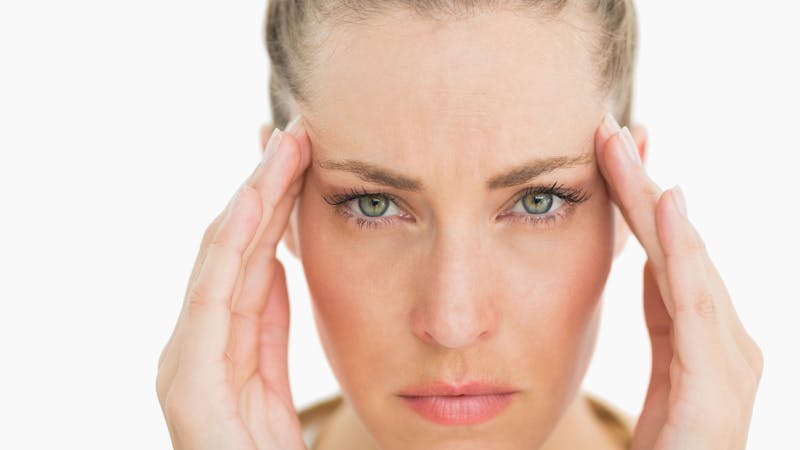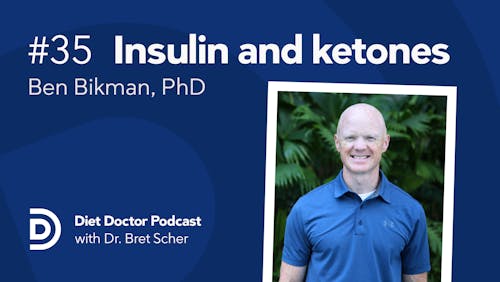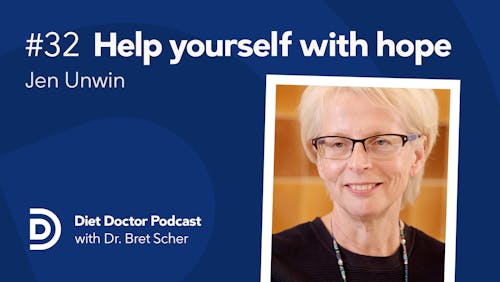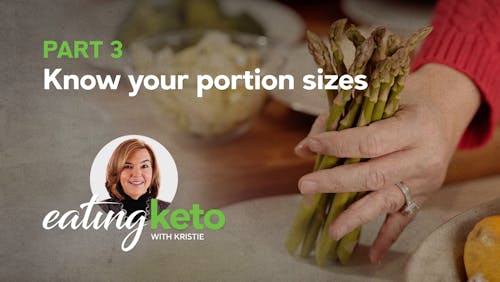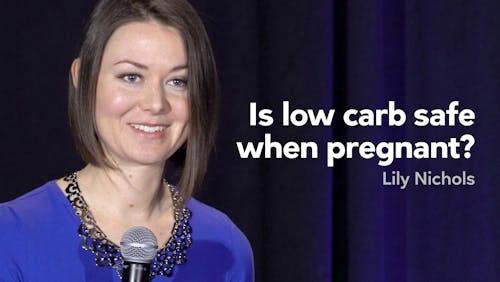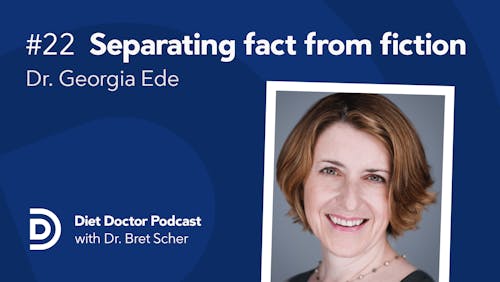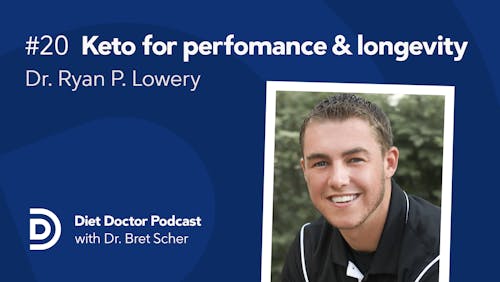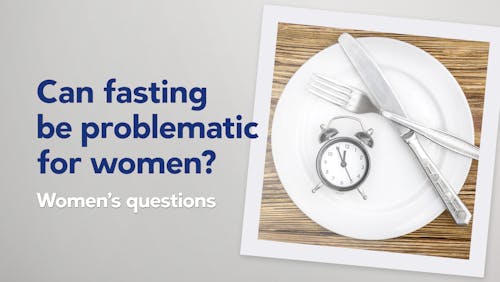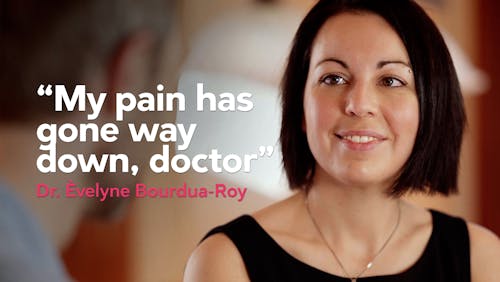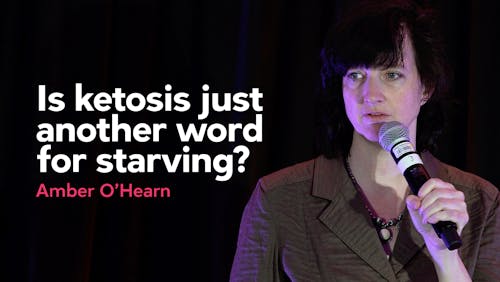Can a ketogenic diet help lipedema?

Lipedema is a complex, chronic condition in which painful fat accumulates disproportionately on women’s hips and legs. It has been traditionally thought to be resistant to diet and exercise.
In a companion, evidence-based guide, Diet Doctor describes what is currently known about lipedema, which is often misdiagnosed as a form of female obesity.
In honor of Lipedema Awareness month, this feature article tells the story of a growing grassroots movement of women who are raising awareness about this challenging condition and sharing resources and encouragement about doing the ketogenic diet for lipedema.
While these stories are anecdotes and not high-quality evidence, Diet Doctor feels its audience will be interested in these women’s stories.
Discovering a little-known disease




She’d struggled to maintain her weight since childhood, but in her late 30s, she’d successfully managed to lose more than 100 pounds, mostly by following a plant-based diet and regular exercise.
Highly active, she’d been able to maintain a comfortable weight for close to 25 years.
Then menopause hit and her health and weight seemed to go haywire. She was rapidly gaining weight, especially in her lower body. Her legs were swelling. She was in excruciating pain and having trouble walking.
Doctors could not tell her what was going on, nor help her with any effective treatment. Her old standbys of exercise and salads were doing nothing to maintain her weight.
“I was facing complete immobility, and that was unacceptable to me. I told myself there has to be an answer. So I started doing research. I was just relentless,” says Seo.
A life-changing textbook
By chance, a therapist gave her a textbook on the lymphatic system, the network of vessels, nodes, tissues, and organs that moves colorless lymph fluid around the body as part of our immune and circulatory systems.
The book had a single chapter on lipedema, a seemingly rare condition of disordered fat accumulation. The disease was first described in the 1940s but had received little attention in the intervening years.1
Seo learned the cause of lipedema is unknown, but it has a strong genetic link with likely a hormonal or another unidentified trigger. It arises almost exclusively in women, mainly at times of hormonal change such as puberty, pregnancy, or menopause. Key features are painful fat accumulation on the hips and legs, and occasionally upper arms.
In later stages, with growing obesity, lipedema often progresses to lymphedema, which is the swelling of the legs and hips with lymph fluid caused by blockage or dysfunction of the lymphatic system.
Image ©2017-2021.Lipedema Simplified, LLC. All rights reserved. Used with permission.For Seo, reading the chapter and seeing pictures of the limbs of affected women was highly emotional, but was also a relief and a revelation. “It just clicked. I cried. But I knew, that’s it! That’s what I have,” Seo says.
She set out to learn everything she could about lipedema, traveling around the US and Europe, interviewing researchers and clinicians specializing in lipedema or lymphatic disorders.
And, especially, she interviewed women in all stages of the progressive condition.
Some, like her, had just been given the diagnosis of lipedema after years of dismay and dismissal, struggling endlessly to try to lose weight and change their body shape with diet and exercise.
Many carried emotional and psychological scars from being stigmatized for their weight, feeling blamed by others, and blaming themselves for being unable to change the look and feel of their hips and legs.Seo discovered that while no one really knew the number of women affected, the condition was likely not that rare. Some lipedema experts estimate it may impact about 10% of all women — which would be close to 17 million in the US alone.2
Groundbreaking documentary
Seo’s research and interviews led to her ground-breaking, 2015 documentary, Lipedema: The Disease They Call FAT.
The film features lipedema’s research conundrums and experts’ experience, as well as intimate interviews with women who bravely share how the condition has impacted their lives, their bodies, and their self-esteem.
“It’s not your fault” is one of the dominant messages of the documentary, which has now been seen and shared by over a million people. Watch it here.Seo went on to found the self-help organization Lipedema Simplified.
She also co-founded, with New York plastic and reconstruction surgeon, Dr. Mark L. Smith, the related research, education, and advocacy group, The Lipedema Project, helping to raise awareness and support for those with lipedema. 3
Similar support groups in the last decade have also been established in other countries, such as Lipoedema UK. (Lipoedema is the UK and European spelling.)
“More global awareness is needed so that women get a timely diagnosis and get the psychological support and compassion they need after so much suffering, poor quality of life, and stigmatization. Some of the women’s stories are heartbreaking,” Seo says.
“Anti-fat bias makes them feel that they brought this on themselves; they are made to feel lazy and stupid for letting themselves get fat,” Seo says. “That’s why the message, ‘It’s not your fault,’ is so important.”
Making a keto connection
Raising awareness about lipedema was the first important step. But how did the grassroots movement to encourage keto eating for lipedema take form?
It was a chance encounter at a health conference in September of 2015.




Keith was doing a poster presentation of a small pilot study she had conducted on the ketogenic diet for lymphedema. She’d enrolled 12 of her patients into a 12-week guided program that educated and supported them in doing the ketogenic diet. The average starting weight of the patients was 237 pounds, with a starting BMI of 38. Most had lymph swelling in both legs.
Of those who adopted the keto diet and completed the study, all experienced positive results, including a reduction in body weight of at least 8%, reduced body mass index (BMI), reduced fluid retention, decreased limb size, and improved quality of life. 5“The study was very small, but the conclusions were very suggestive that weight loss can have a significant impact on lymphedema and quality of life. And a ketogenic diet may be the more successful method to achieve that weight loss,” Keith says.
Seo saw Keith’s poster and was transfixed. “Do you think keto might help women with lipedema?” Seo asked Keith.
That question started an almost year-long discussion between the two women, now close collaborators. It led them to host a webinar, in August of 2016, about the rationale and practical steps to do a ketogenic diet for lipedema. About 50 women with lipedema attended.
“Skeptical but intrigued”
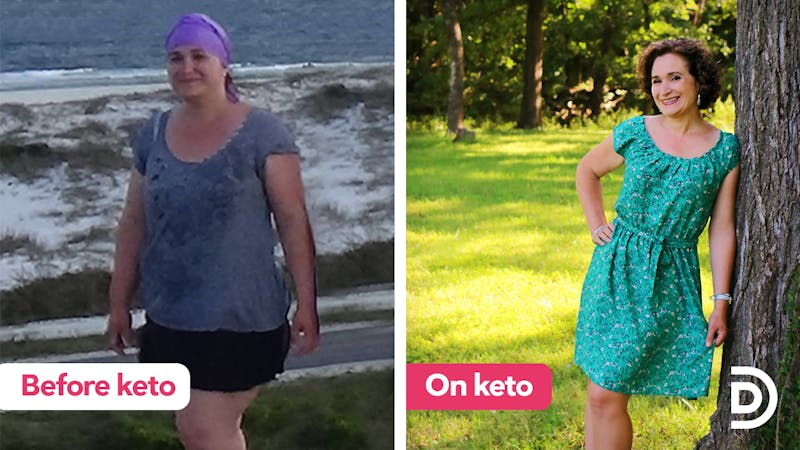



“I was super skeptical. I’d tried every diet marketed under the sun and I thought, ‘Is this just another marketing scam?’”
Staggs had recently learned that lipedema was the name for her painful, large hips and legs. She was trying to learn as much as she could about the condition that also impacted her mother and other female relatives.
Staggs had always wondered if something might be wrong with her legs. “My legs looked just awful. Everything was lumpy and painful, and I did not understand why.”As a mother of four, she’d hated it when her kids bumped her legs. She had hard, painful nodules under the skin of her thighs. She had been obese all her adult life despite trying endlessly to diet and exercise. She suffered debilitating migraines up to 20 times a month since age 16, which she did not know can be a common complaint of some women with lipedema.
When she and her mother watched Seo’s documentary, she cried. “These women were telling my story. It was very emotional, but it was also a victory, like Yes! I knew there was something wrong.’”
Could a keto diet help her get down from a size 22 pants to a size 16 for a special trip she and her husband were planning? Right after the webinar, she started eating a keto diet in secret.
“I didn’t tell my family because I didn’t want to raise their expectations or for people to say ‘Mende’s on another diet.’ If keto failed me, I wanted to be the only one who was disappointed,” she says.
But keto did not fail her; the results have astounded her. She hasn’t had a single migraine since the week she started keto in August 2016. Her leg pain disappeared even before she had lost any noticeable weight. And her lower body size steadily reduced over the coming months.Not only did she surpass her goal of fitting into size 16 pants, but she’s also astonished that she now fits into size 6 pants. She intends to eat this way for life.
How much weight has she lost? Likely more than 100 pounds. “But I don’t talk about weight because it’s a meaningless number and a horrible measure of health. I don’t care what the scale says,” Staggs says.
What she does care about is that her head is clear, she’s full of energy, and she feels better now at age 48 than she has her entire adult life. She can wrap a standard towel around her, sit comfortably in a chair, enjoy shopping for clothes and bathing suits, and especially enjoy eating delicious, satisfying food without guilt or regret.
“Keto is the only way of eating I’ve ever been able to do in which I feel full, not hungry, and not deprived. As an obese person, I constantly felt guilty and judged by others no matter what I ate. So for me to enjoy food without guilt, to be satisfied with what I am eating – and still be thin – is a miracle,” she says.Staggs is now coaching other women with lipedema who want to try the diet. “I share my story because I want to give women hope, so they don’t have the desperation that they cannot change their lipedema,” she says.
“I especially want to reach women who are young adults. Maybe if they start the ketogenic diet, it might prevent progression and prevent years of pain and distress that I and others have experienced.”
Pain resolved in days
Stagg’s story is not unusual. A common experience is that the pain of lipedema resolves for many women within days of starting a keto diet, before any weight loss.
That’s what happened to Theresa Deflitch, 56, of San Antonio, Texas, whose legs had started swelling by age 7 and who has struggled with her weight since her teens.
Throughout her life, whenever she saw doctors, they would simply hand her a diet sheet and dismiss her. When she had gastric bypass in 2010 but did not lose significant weight from her legs, the doctors scolded her.
“They said, ‘You’re not following the program. You’re not losing as much weight as you should,” Deflitch recalls. “No doctor ever stopped and wondered: ‘Maybe something else is wrong here.’” To Deflitch, that dismissive attitude was as if they were saying directly to her: ‘You’re a liar, and you’re not doing what we told you.‘
In 2019, Deflitch’s lipedema was advanced, she had developed lymphedema, and the pain in her legs had become excruciating. “It was like someone was ripping a knife through them.” She could hardly get out of bed to go to work as a medical technologist. She could no longer climb stairs.
She started the keto diet on June 22, 2019. On June 28, six days later, her pain was gone.
“I remember it, crystal clear. I was lying in bed thinking that getting up was going to be a nightmare. But when I sat on the side of the bed, I thought, ‘Something’s weird here.’ I lay back down and sat up again. And the pain was not there. I stood up, and I just started crying. It had been so long since I’d not had pain. It was mind-boggling.”
Within three months, the frequent bruising on her legs was gone. After a year of doing the keto diet, she had lost 65 pounds.
These days, she finds it very easy to keep keto. If she eats too many carbs, the pain in her legs will creep up again. She still has lymphedema and has to wrap her legs with velcro compression bandages daily to keep her swelling under control.Her focus is on eating more nutritious keto foods, doing more minutes each day on her elliptical trainer, and climbing more stairs. She, too, works with others through Lipedema Simplified to coach and encourage other women.
“Women with lipedema have been ignored and been disempowered for so long. I don’t want any other women to go through what I’ve gone through,” says Deflitch. “I want them to know that the keto diet might work for them. It may not be a solution for everyone. But women need to hear about it, so at least they can try it.”
“They might have their pain resolve in as little as six days,” she says.
N=10,000+ and growing
Word is getting out to other women with lipedema that a keto diet might help them.
Seo estimates that now more than 10,000 women with lipedema have attended one of their webinars, master classes, or other support groups. A private Facebook group, Keto way of eating for lipedema, that Seo started in the fall of 2016, now has 11,500 members.
And the positive anecdotes are piling up.
Nobuhle Williams, 59, of Cincinnati, started the keto diet in March 2019. Along with lipedema, she had other complex health problems. Before keto, she could barely stand for five minutes. She lost 90 pounds in 11 months and now can stand for hours. She swims twice a week, works out on vibration plates and a rebounder, and is now excited about her life again.




Raeann Sparks, 62, from Alberta, Canada, was in a wheelchair with stage 3 lipedema, type 2 diabetes, and crippling osteoarthritis of her knees. At age 55, she was denied knee replacements because she was told she was “too fat” to be a successful candidate.
After doing the keto diet, Sparks reversed her diabetes. She lost 70 pounds, removed the need for knee replacements, and now regularly commutes by bicycle to work. She, too, is coaching other women with lipedema.
“I had to start coaching because I could not shut up about how great keto is and what a difference it made to my life,” Sparks says.
Clinical trials underway
Seo recognizes that these sorts of anecdotes are not deemed good-quality evidence.
“But when you start amassing thousands of anecdotes, it starts becoming data, and you can say, ‘We are seeing a pattern here,’” Seo says. “We know that keto doesn’t work for everyone with lipedema. But for those it does work for, some of the results can be pretty stunning.”
Now, the Lipedema Project is working to promote its own research, a move stimulated by Megan Pfeffer joining the team. Pfeffer, who also has lipedema, is a medical nutritionist in Australia as well as a keto coach for others with lipedema. After she successfully used a ketogenic diet, Pfeffer approached Seo to see how she could help the millions of women worldwide with lipedema.
“Megan brings such a depth of knowledge and personal experience with nutrition science and lipedema as well as genuine compassion, that we knew she had to be part of our leadership team,” Seo says.
Seo, Keith, Pfeffer, and their colleagues aim to get their own randomized clinical trial underway. They are working on protocols, clear inclusion definitions, and also raising funds and support.
Recently, they were also co-authors, with seven others, on a journal paper that reviewed the research evidence about lipedema and summarized why a ketogenic diet may help it, concluding that good clinical trials are needed. 6
Dr. Gabriele Faerber, of Hamburg, Germany, has been using the ketogenic diet to treat lipedema for 13 years in her specialized outpatient weight loss clinic. In November 2020, Faerber was one of the guest speakers at the Ketogenic Solution for Lymphatic/Fat Disorders Virtual Symposium, hosted by Seo and Keith and others from Lipedema Simplified.7
Faerber presented findings on a follow-up of 100 women with lipedema who had been treated at her clinic. Most had been doing the diet for at least three years. Faerber showed that 83% of the women experienced significant weight loss, pain reduction, and leg size reduction.
“The effects are caused by the change in nutrition and metabolism after only a few days, before any significant weight loss,” notes Dr. Faerber. “I can never tell a patient what she will look like or feel like after starting a ketogenic diet, but I can tell her that she will most certainly feel much better.”
Another guest speaker at the November symposium was Siren Nymo, PhD, a specialist in obesity treatment at the University of Oslo in Norway. Nymo is the principal investigator of the first registered clinical trial of the ketogenic diet for lipedema patients. Her project aims to recruit 80 Norwegian women with lipedema for a randomized controlled trial of the ketogenic diet versus a standard Norwegian diet.
“As a specialist in obesity, it is so hard not to be able to help women with lipedema who cannot seem to lose weight from their legs and are in so much pain,” Nymo says. “This is an area of health that has been ignored. We need to do better to find solutions to help them.”
All of these developments amaze Seo, who also has seen her health improve with a keto diet.
“I am so pleased that lipedema is no longer the hidden, unknown entity that it once was. We know that no two women with lipedema are alike, but now we can offer more knowledge, support, caring, empathy, and a community of other women who understand. We are offering hope — for some women for the very first time in their lives.”
And to Seo, that truly feels like a miracle compared to where she was 10 years ago.
Learn more about ketosis
Annals of Internal Medicine 1951: Lipedema of the legs; a syndrome characterized by fat legs and edema [review article; ungraded] ↩
Plastic and Reconstructive Surgery Global Open 2016: Lipedema: A relatively common disease with extremely common misconceptions[expert review; ungraded] ↩
Seo is also a co-author of a book for clinicians about diagnosing and managing patients with lipedema, called Lipedema – The Disease They Call FAT: An Overview for Clinicians ↩
Removal of lymph nodes during cancer diagnosis and treatment can disturb lymph flow, resulting in lymphedema in the nearby limb and the collection of fat cells around the stagnant lymph.
Nature Genetics 2005: Lymph makes you fat[overview article; ungraded] ↩
Keith’s study was published in 2017.
American Journal of Lifestyle Medicine 2017: Lifestyle modification group for management of obesity and lymphedema[case-series pilot study; weak evidence] ↩
Medical Hypotheses 2021: Ketogenic diet as a potential intervention for lipedema[expert review article; ungraded]
↩Recordings of the 2-day symposium are available for viewing online with a $97 registration fee. ↩


